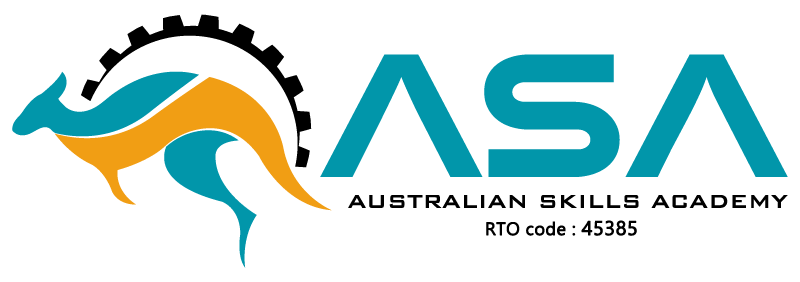BSB51319 | Diploma of Work Health and Safety
$$
About this course
BSB51319 | Diploma of Work Health Safety
Work health and safety (WHS) legislation in Australia aims to prevent injury and disease to persons in the workplace. State, Territory or Commonwealth legislation applies.
Importantly, several Australian jurisdictions have ‘harmonised’ their legislation from 2012. Harmonised legislation means that each jurisdiction enacts its own legislation, but the legislation is as much alike as possible in its provisions.
Common to all WHS legislation in Australia are the following features:
-
- support for WHS in the workplace
- provision of systems of work that are safe and without risk to health
- prevention of injury and disease through the elimination or minimisation of risks
- protection of the general public’s safety and health
- workplace representation, consultation, co-operation and issue resolution
- Inspectors
- Regulations
- Enforcement
Trainers and assessors may refer to the Department of Industry, Innovation and Science for a listing of the various WHS legislation and codes of practice by State and Territory.
This qualification is designed for individuals those wishing to enhance their expertise in coordinating and maintaining the work health and safety program used within their workplace and suited to practitioners that apply their skills and knowledge in a wide variety of WHS contexts.
| Download Brochure | Size |
|---|---|
| Work Health Safety Courses.pdf | 140 KB |
Course Overview
Entry requirement
The training package does specify entry requirements i.e.
All BSB41419 Certificate IV in Work Health and Safety core units or equivalent competencies. Equivalent competencies are predecessors to the following units which have been mapped as equivalent.
-
- BSBWHS412 Assist with workplace compliance with WHS laws
- BSBWHS413 Contribute to implementation and maintenance of WHS consultation and participation processes
- BSBWHS414 Contribute to WHS risk management
- BSBWHS415 Contribute to implementing WHS management systems
- BSBWHS416 Contribute to workplace incident response.
Furthermore, ASA staff must inform the prospective learner that this course does require an amount of reading, writing (including calculations) and the ability to access and interpret information. Good command of the English language is important, access to and familiarity with the use of computer technology, legal framework, the capacity to manage relatively complex tasks with an awareness of how they contribute to operational and strategic goals and use systematic analytical processes to evaluate options.
Pathway From the Qualification
After achieving this qualification, candidates may progress to higher-level qualifications within and/or across the Health and Safety.
Credit/Advanced Standing/RPL
Our college recognises the skills and knowledge that students may have gained through previous studies, workplace and life experience. They may be entitled to gain recognition of prior learning before or after commencing the course that may exempt them from attending one or more units. Students who believe they already have the skills and knowledge required to demonstrate competency can request a copy of the RPL application form. Students are provided with information regarding the evidence required for each qualification and must provide valid, sufficient, current and authentic evidence to demonstrate competency. RPL is based on a portfolio and interview approach, where students accept the main responsibility for identifying, gathering and submitting evidence about their achievement of the competencies. The RPL process may involve a practical demonstration assessment too.
Work placement and Industry Membership
No work placement and industry membership providers for this course at this time.
Additional supports and services
Additional support is available for students with learning difficulties and disabilities. The College welcomes contact with parents/guardians of students who are under 18.
Possible Career Outcome
- Occupational Health
- Safety Practitioner
- Occupational Health and Safety Officer
Mode of Delivery
This course is being delivered by an external flexible delivery mode via fee for service. There is no requirement to attend classes.
Candidates will have 12 months in which to complete their studies (but this may be extended by a further 6 months’ subject to the circumstances described in ASA policies and procedures. During the 12-month period, candidates should expect to allocate up to 440 hours to their studies. This includes workplace training and supervision, regular meetings with the trainer, guidance sessions (e.g.. Skype), completing structured learning activities, undertaking personal research, reading and assessments.
On enrolment and at the time of the initial interview, candidates will provide evidence of their prior experience and workplace context (which is part of the entry conditions. Some of this information will be used by the trainer to develop a specific training plan based on the principles of gap training and which can be contextualised according to the learner’s workplace environment. Evidence of prior work experience and learning will be considered for RPL (recognition of prior learning).
Candidates are subsequently guided by the trainer through regular scheduled personal contacts either at work or at an acceptable external location. The candidate’s personal training plan specifies what learning is required and learners are encouraged to seek supervision especially in the application of skills at work. The candidate’s progress is monitored by the trainer utilising the training record book and (if applicable) coordinated with the workplace supervisor.
Subject reference materials, learner guide, training record book, training plan and assessment activities are provided directly to the candidate by the trainer and they are also available via the internet through the ASA portal.
Typically, the learner cohort for this strategy is expected to need a minimum of 530 hours of training comprising:
-
- Direct contact hours with the trainer 50 hours
- Structured learning activities 180 hours (provided by the trainer to reinforce learning)
- Supervised work practice and implementation 300 hours (workplace training record book)
All candidates for this qualification will be interviewed to establish whether they have the necessary pre-requisites (see Course Overview) and to ensure they have access to a workplace where they can receive supervision relating to developing their skills in WHS. This will include having access to the WHSMS. During the interview, all reasonable efforts will be made to ensure the applicant is aware of the demanding LLN requirements associated with this course and to ensure they have the capabilities to complete the course within a reasonable time. In addition, the applicant will be provided with the opportunity to complete a self-assessment instrument which can be used for an assessment via RPL.
Duration and Timing of Training
The AQF specify that the volume of learning for a non-indentured Certificate IV qualification is 1 -2 years.
This course is being delivered flexible delivery and candidates will have 12 months in which to complete their studies (but this may be extended by a further 6 months’ subject to the circumstances described in ASA policies and procedures.
During the 12-month period, candidates should expect to allocate up to 530 hours to their studies. This includes workplace training and supervision, regular meetings with the trainer, guidance sessions (i.e. Skype), completing structured learning activities, undertaking personal research, reading and assessments.
The expected amount of training to be provided by the RTO, is approximately 366 hours depending on the experience and aptitude of the individual learner. (refer to the delivery mode for further details).
ASA will apply the general direction specified by ASQA in relation to learner transition where a training product is no longer current.
Learner Needs
Learners must be informed that this course requires extensive reading and interpretation of legislation, regulations, codes of practices and complex safety instructions, manuals, policies and procedures.
This requires the candidate to have a good command of English and be able to research, read and interpret complex texts, documents and reports.
Trainers and assessors must pay attention to the section on LLN and Foundation skills within this document. At the same time, the RTO will remind learners of the opportunity for RPL and what it entails.
Applicants will be advised at the time of inquiry and again at the time of enrolment that there will be an assessment of their LLN skills. This assessment is undertaken to ensure the applicant will not have any LLN impediments that could limit their capacity to learn and acquire skills. The probability of someone presenting with LLN issues is low but all must be assessed at the time.
Should any be identified at the time of enrolment, Australian Skills Academy will assist that student by introducing them to specialist services and work with these service providers to ensure the candidate is given every opportunity to achieve a successful outcome.
Those candidates deemed to have ‘does not meet’ standard level of LLN e.g. ‘upper intermediate proficiency’, must be advised they are at risk of not being able to complete this course and will be offered specialist support.
In these circumstances, it may be necessary to defer the candidate’s enrolment until the outcome of the LLN program indicates they have attained suitable LLN proficiency.
ASA will confirm its commitment to LLN skills within the training program by:
-
- Ensuring training and assessment materials are written in plain English
- Ensuring training and assessment materials meet literacy and numeracy needs of the industry
- Making reasonable adjustments to the training and assessment process where required
- Ensuring its trainers develop better and more effective LLN training and support skills
- Providing access to specialist support to individuals if required
- Monitoring learners to determine if they are at risk of not being able to complete their course (for either LLN or other personal reasons)
Key indicators for those at risk include
-
- Irregular attendance
- Failing to make reasonable progress with learning activities
- Not completing an assessment task on time
- Avoiding classroom activities
- Not completing either one of the initial two units of competency of their training plan.
A similar assessment of any potential physical disabilities will be undertaken at the time.
Payment Options
We have a number of options to allow you to select a payment method best suitable to your financial situation. Please refer to course fee section get the current fee structure for this course.
Method of Payment: Online, Bank Transfer, CC over the Phone, Bank Draft
Please mention your preferred method of payment in your application form and our staff will confirm your payment and any associated cost for your course.
Syllabus
This qualification reflects the role of individuals coordinating and maintaining the work health and safety (WHS) program in an organisation. The qualification applies to supervisors and managers who apply a substantial knowledge base and well-developed skills in a wide variety of WHS contexts.
CORE UNIT | BSBWHS513 - Lead WHS risk management
This unit describes the skills and knowledge required to lead the management of work health and safety (WHS) risks in an organisation. The unit includes facilitating the identification of hazards and potential hazards, leading the assessment of associated risks, selecting and implementing suitable risk controls, and evaluating the overall effectiveness of the organisational WHS risk management process. It involves communicating with stakeholders throughout the process.
CORE UNIT | BSBWHS515 - Lead initial response to and investigate WHS incidents
This unit describes the skills and knowledge required to lead the initial response to work health and safety (WHS) incidents. The unit also includes planning, conducting and reporting on investigations of WHS incidents that have resulted in, or have the potential to result in, injury or damage. This may include accessing specialist expertise.
CORE UNIT | BSBWHS516 - Contribute to developing, implementing and maintaining an organisation’s WHS management system
This unit describes the skills and knowledge required to contribute to the development, implementation and maintenance of elements of a work health and safety management system (WHSMS). WHSMSs support organisations in systematically managing work health and safety (WHS) in the workplace. WHSMSs consist of a documented set of plans, actions and procedures that target improvements.
CORE UNIT | BSBWHS519 - Lead the development and use of WHS risk management tools
This unit describes the skills and knowledge required to lead the development and use of work health and safety (WHS) risk management tools.
CORE UNIT | BSBWHS522 - Manage WHS consultation and participation processes
This unit describes the skills and knowledge required to manage the identification, review, development, implementation and evaluation of consultation and participation processes as an integral part of managing work health and safety (WHS).
ELECTIVE GROUP A | BSBWHS514 - Manage WHS compliance of contractors
This unit describes the skills and knowledge required to lead and coordinate organisational arrangements for managing the work health and safety (WHS) compliance of contractors. It involves determining the WHS legislative and organisational requirements applicable to contractors, and managing compliance of contractors.
ELECTIVE GROUP A | BSBWHS517- Contribute to managing a WHS information system
This unit describes the skills and knowledge required to contribute to managing a work health and safety information system (WHSIS) that supports the effective management of WHS. It involves accessing, collecting and analysing WHS information and data; evaluating the effectiveness of the WHSIS and contributing to improving the management of WHS; and communicating the change.
ELECTIVE GROUP A | BSBWHS520- Manage implementation of emergency procedures
This unit describes the skills and knowledge required to implement initial response procedures for emergencies. Its focus is on the implementation of procedures already developed for short-term emergency responses. It assumes that expert advice will be available in identifying potential emergencies and in formulating response plans.
ELECTIVE GROUP B | BSBMGT516 - Facilitate continuous improvement
This unit describes the skills and knowledge required to lead and manage continuous improvement systems and processes. Particular emphasis is on the development of systems and the analysis of information to monitor and adjust performance strategies, and to manage opportunities for further improvements.
ELECTIVE GROUP B | BSBHRM509 - Manage rehabilitation or return to work programs
This unit describes the skills and knowledge required to process and analyse workers compensation and sick leave claims. It also covers the establishment of rehabilitation needs and return to work programs and their monitoring, review and evaluation.





